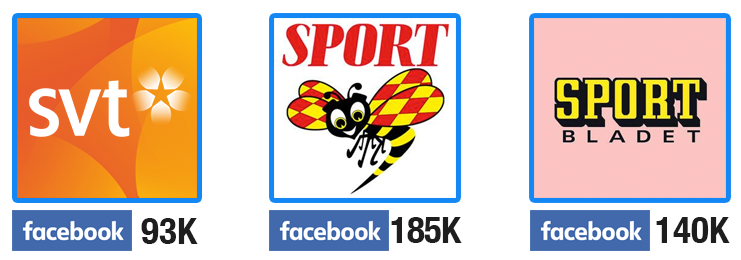Our recently published infographic explains how publishers are losing money because they don’t know how valuable each minute is when it comes to posting news. This blog posts goes deeper into looking at the facts and figures behind the infographic, and why putting a dollar value to time is really really difficult.
Breaking news, viral stories and newsworthy events proliferate across the internet within minutes. Facebook’s infamous algorithm dominates what the world reads and the race to publish first has never been so fierce or so important. But how does it measure up in purely financial terms?
The answer to this is, predictably rather difficult to accurately obtain. Here are four reasons why:
1. Not all publishers post the same content all the time. Publishers and their audiences are not identical. Sports, fashion, celebrity, politics do generate stories that crossover in terms of interest (Olympics, elections etc), but these stories can’t be compared equally across a big group of publishers. An entertainment story is going to be worth more to an entertainment based publisher and less to a traditional broadsheet publisher.
2. When comparing the same stories across similar publishers – e.g. tabloids, they will in general all be racing to cover the same events. It is possible to get a really significant comparison but it is also necessary to manually sort stories, which takes time. Unless you automate it, which takes time.
3. Fan base size is different across publishers. Even if you post a scoop 20 minutes before Buzzfeed, they will still dwarf you in absolute numbers when they post it. This is undoubtably true but we can work around by working in percentages normalised by fanbase. This will still tell us whether being fast has a positive effective on traffic relative to your own averages. Not to mention that people are willing to share news regardless of the source. Increasingly it doesn’t matter if breaking news is being served by Buzzfeed, Lad Bible or The Guardian – what matters is people seeing it.
4. We don’t know traffic or reach across all publishers. True, no one does. There are usually some kind of widely used estimations out there – TNS Gallup, Kia Index in Sweden etc, but we also know that these are not accurate. Right – but what we DO know is total engagement across Facebook for every publisher, including all engagement taking place on articles but away from the Facebook page of the publisher. This is important engagement because it is the big traffic driver – people are seeing articles on Facebook via their friends. We also know the relationship between engagement, reach and clicks. Although these vary on a post by post level, looking at a larger data set gives us some solid averages upon which to base estimates.
At EzyInsights we are working on sorting out a huge set of data that we can use with confidence to give some great insights into the media world. That will come in time, the more data the better.
However, in the absence of that right now, I’ll go through one really good example here in a single area – sports.

At the start of the Summer, Sweden’s U21 Football team won the European Championships. This was HUGE news in Sweden, as it always is when a smaller population country wins against bigger neighbours. It was also a perfect example of a time critical story where every minute counts. 3 major publishers covered the story:

SVT, SportExpressen and SportBladet.
SVT are the smallest in terms of Facebook fanbase at 94k, SportExpressen and SportBladet sit at 185k and 140k respectively.
In terms of reporting this story (and by story I mean an actual link on Facebook to an article on their website, not a picture celebrating the win), SVT were first. Their story came in at 1.08am. SportExpressen were second at 1.14am and SportBladet left it until 1.25am. A total difference of only 17 minutes.
SVT also won the battle for engagement across Facebook, despite having the smallest fanbase by over 47,000 page likes.
SVT: 87,231
Sport Expressen: 52,092
SportBladet: 25,298
Using our internal equations based on a significant amount of publisher data regarding clickthroughs, reach and engagement – we can make a reasonably conservative estimate regarding the value of that engagement. We see that by being 17 minutes late, both Sport Expressen and SportBladet lost out on just over €3000 of ad revenue (€3166.67).
For a major publisher then, each minute lost was worth between €155-€250.
“Wait!” I hear you ask – “can you explain these figures in even more detail?” Sure. We know from looking at a pretty large amount of data over the last couple of years that engagement data and clickthroughs tend to have a strong correlation. The first thing we do is strip out video and picture engagement – concentrating only on links (articles) posted. On a post by post basis we see quite a wide variation (a huge variation on particular engagement baiting posts), but looking over a bigger dataset and cleaning away the extremes gives us a much closer and stronger correlation. We have a clickthrough estimator that is always learning by taking into account real figures for engagement vs clicks.

We will assume a posting rate (again, a reasonably conservative one for this area of the world) of 20 stories a day on Facebook, and we’ll imagine that the publisher is 5 minutes later than any single competitor when posting 15 of those stories (again, fairly likely). Over one year (let’s call it 360 days, again to be conservative – some days really are slow news days), that adds up to a loss of between €837,482.04 and €1,314,605.91, the mid point of which, is €1,076,043.98 – just over a million euros. We’ve also used an estimated full page CPM revenue of €8. Is this accurate? We think for the publications chosen it’s a reasonably conservative estimate. If you know your real page CPM average is half that, at €4 – then you can halve the total amount also.
If there’s one thing to pick on in the calculations – and please remember these are based off of one story so are really an illustration of what’s possible, not what’s the norm (we will work this out though, the more data we crunch, the more accurate the estimates become) – it’s the multiplier which penalises the bigger pages. This calculation was included as we tend to see that engagement does not increase hand in hand with the number of likes a page has. This is to be expected as bigger pages tend to appeal to wider demographics. These are sports specific pages not football specific ones, so as page fan numbers rise, so do the potential number of fans that will not engage with the story. Now this multiplier is an educated guess, and if we were to exclude it completely, we end up with a figure about 200k short of a million. Still a significant sum.
 One could also argue that we’ve double counted the potential cost to the 2nd and 3rd publishers. This is true when coming up with the combined cost of €3166.66 – but I think it’s the only way to count the combined loss neatly, which that figure intends to represent. When we make the cost per minute calculations, which are what the final estimated per year figure is based on, we don’t double count. In fact we split the difference between both publishers to make it a bit fairer.
One could also argue that we’ve double counted the potential cost to the 2nd and 3rd publishers. This is true when coming up with the combined cost of €3166.66 – but I think it’s the only way to count the combined loss neatly, which that figure intends to represent. When we make the cost per minute calculations, which are what the final estimated per year figure is based on, we don’t double count. In fact we split the difference between both publishers to make it a bit fairer.
And of course, SVT, being the state broadcaster and thus publicly owned didn’t gain any revenue for being first here – which is true – but that traffic and thus revenue was still lost by the commercial publishers. This appears to be an ongoing concern in countries with a strong state broadcaster, for example the UK, Finland and certainly Sweden. When the state broadcaster is taking away potential revenue from commercial publishers it can be a problem. But! Let’s leave that battle for the publishers to fight. It certainly doesn’t mean that SportExpressen and SportBladet lost any less, lost traffic is lost traffic. On the contrary, the fight to be first is more important for commercial publishers as they are literally fighting for money.

What about smaller pages? So you are a publisher with only 20k Facebook page likes. You can likely divide appropriately to get a rough idea of what the figure lost could be for you. Smaller publishers may be more specialist however and be able to command a higher total CPM.
And finally – how about stories that are time sensitive, but not so critical that every minute counts? We have a great example of that from earlier in the year actually which I will talk about in another post as these are much too long. The takeaway is that being first still matters a lot!
If you are still with me then you can see that there are tons of factors that can greatly affect any attempt to estimate dollar/euro values.
In short: being 5 minutes late can cost a publisher a million euros a year.
It has never been more important to be first.
